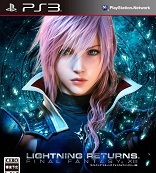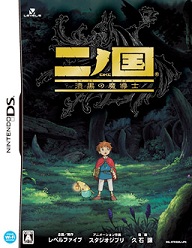« Nier Gestalt: TGS 2009 Hands-on | Main | Disgaea Infinite: TGS 2009 Hands-on »
Gyromancer: TGS 2009 Hands-on
By Janelle | September 26, 2009 at 10:13 am
Amid the glitz and glamour of the rest of the Square Enix booth was Gyromancer, a snap announcement at the Tokyo Game Show. It was easy to miss, tucked in a back corner with three televisions hooked up to Xbox Live displaying two other games. The attendant was more than happy to rig up an English version.This game is sure to be compared to Puzzle Quest, so let’s not fight it. Created in partnership with PopCap Games, Gyromancer looks like it’ll be similar to Puzzle Quest, just better produced.


The main character of Gyromancer is a man named Rivel, who explores the world hunting some unspecified quarry, with summoned monsters in tow. He uses these summoned monsters to fight in battle in his stead. The demo opened with him traveling through a forest, which amounted to a short dungeon. The forest was laid out in the form of narrow, branching paths, with objects scattered along it, like treasures and locations that heal Rivel’s beasts. As the player moves Rivel along the path, monsters also move back and forth. One even appeared to give chase as I moved close to and then farther away from it. After touching a monster, a battle begins. The monster’s level, HP, and gem affinity are shown, and the player selects a monster accordingly. The demo gave me two beetle monsters and a falcon with ice abilities. For the tutorials and first battles, I used the beetles, but grew attached to the falcon over time.
After selecting a monster, the battlefield is revealed, a large grid filled with sparkling gems of six or seven different colors. The square cursor wraps around four gems, and when pressing the A button, rotates the four clockwise. Matching three of a kind or more lets the player accumulate points for bonuses, and if the gems match the monster’s affinity color, their skill gauges will fill. Making moves without matches decreases the skill gauges. When the skill gauges are increased enough, their power will transfer to one or more gems on the board. Making matches with those gems will execute those skills, damaging the opponent. The algorithm isn’t exactly clear, but how you clear the skill-powered gems seems to affect their power (four-of-a-kind would do more damage than a simple three, for example).
Though the opponents moves aren’t visible, they are making moves as well, and when their gauges fill up, the power will transfer onto gems, which will receive menacing skulls and a counter. The player must destroy those gems by matching them before the counter reaches zero, or the summoned monster will take damage.
Since moves can be made without any matches, the system challenges the player to try and think efficiently, rather than matching with plenty of errors and button presses. There were more than a few occasions where, in my haste to make a really good match that I spotted, I used three turns where I could have used just one, and took damage because of it.
The demo contained a few battles, and then a boss, where I was granted an orb to power up one of my monsters. After that power up, I simply wiped the floor with him. A short story sequence followed where a woman joined Rivel in his quest, and then he gained the ability to summon a new type of monster.
This play experience was short, snappy and entertaining, and after lots of overly flashy demos filled with repetition, Gyromancer was a refreshing way for me to close out the show.
Topics: Gyromancer, Previews, Tokyo Game Show 2009










